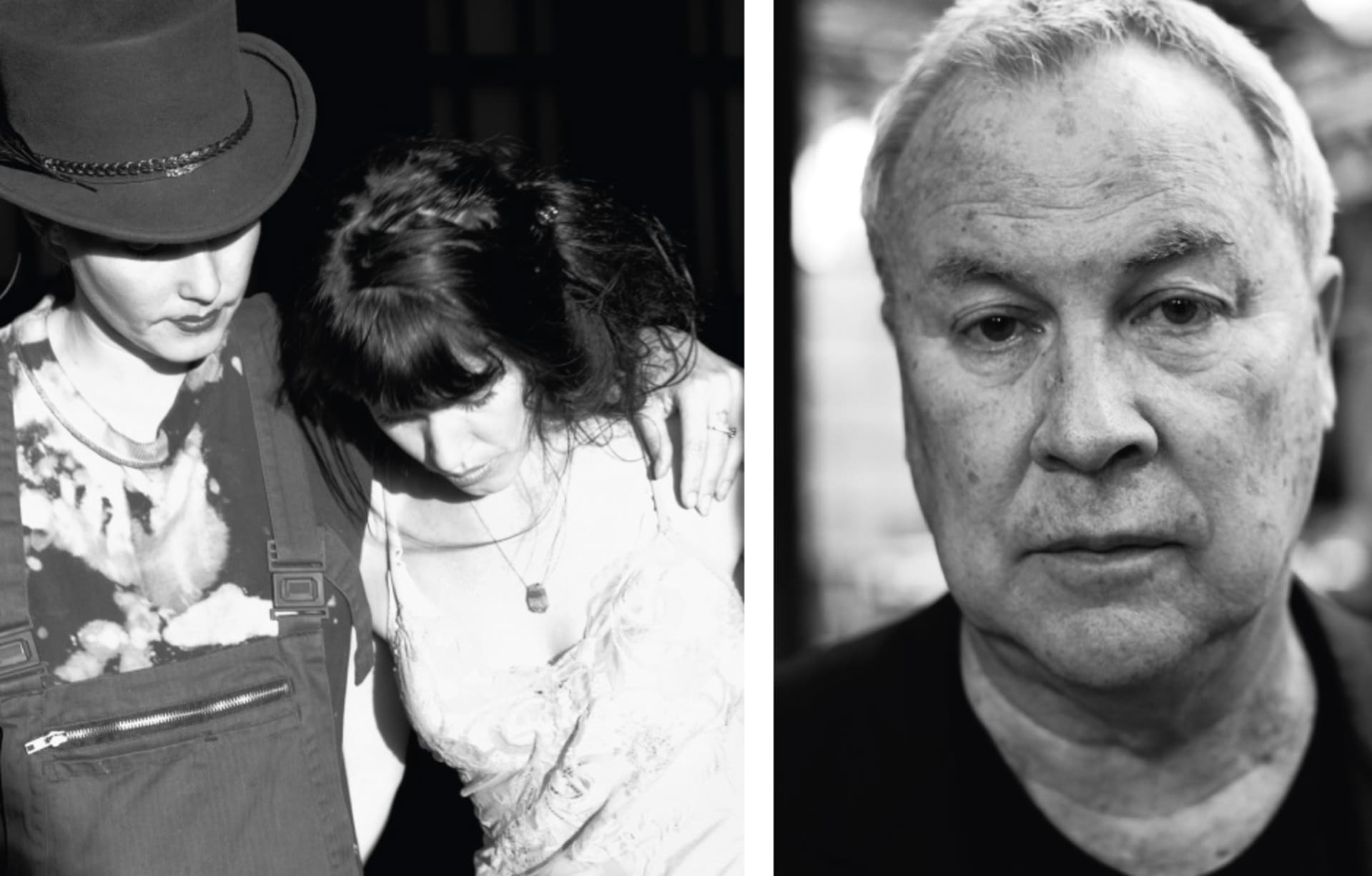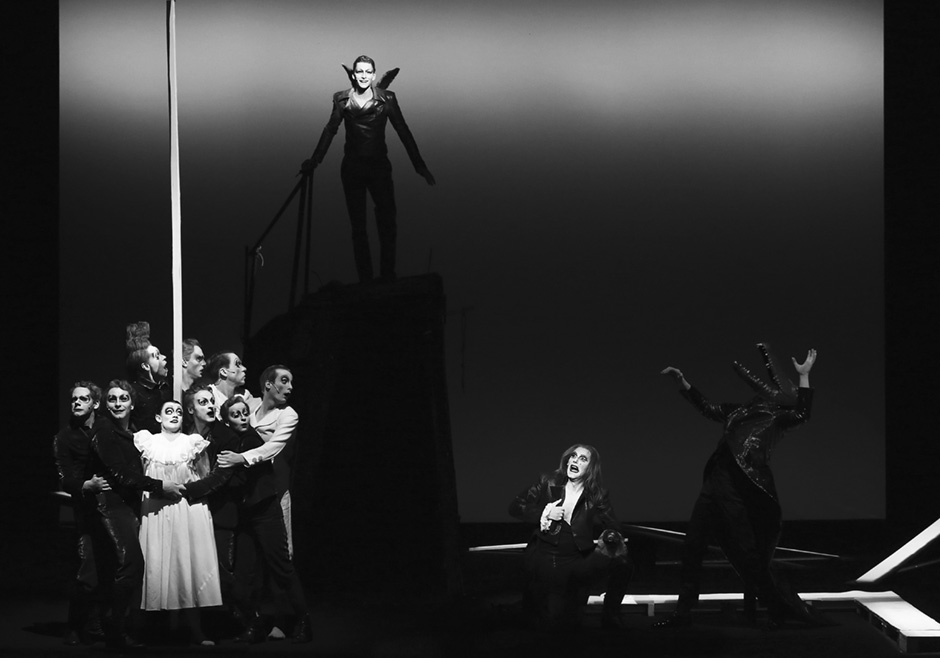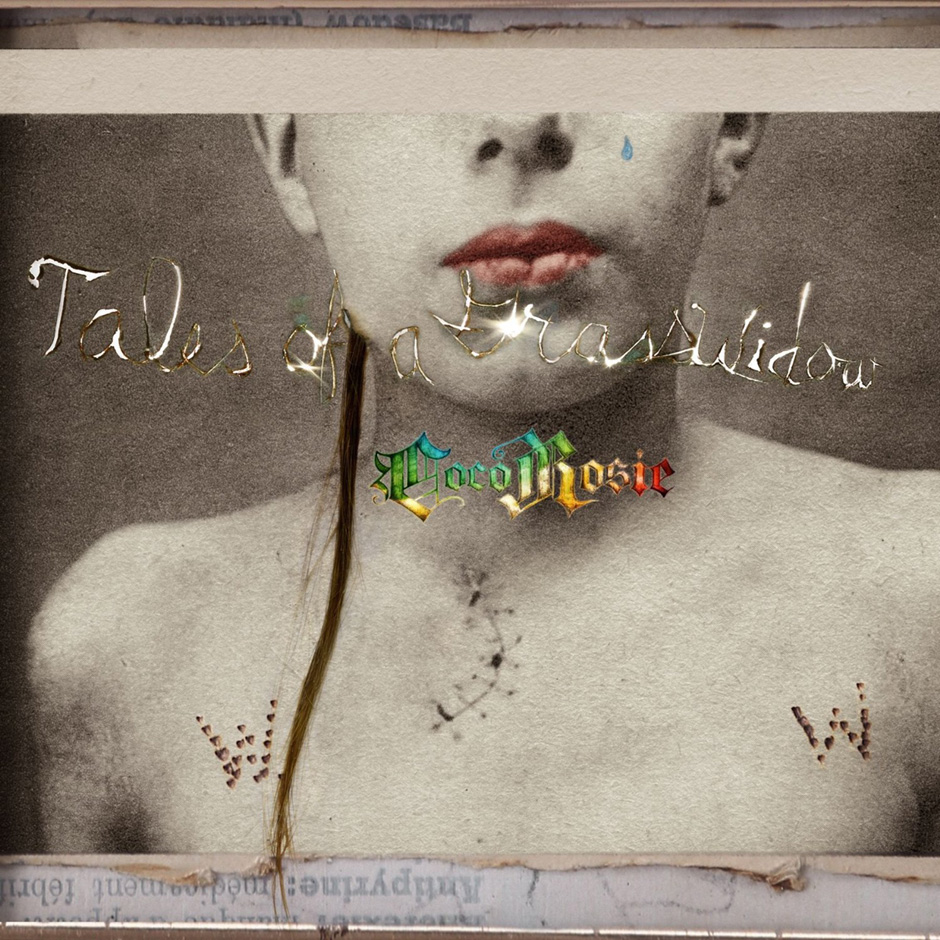
“The theater was a place of ill repute and it was a sin to go”: Bianca and Sierra Casady of CocoRosie talk to Robert Wilson
Above left: Bianca and Sierra Casady of CocoRosie, photographed in Berlin by Luci Lux. Above right: Robert Wilson, photographed in Bochum, Germany by Oliver Schultz-Berndt.
Sound was always an intergral part of Robert Wilson’s vision. Since the early seventies, the Waco, Texas-born artist and director has been parsing out the emotional value of theater into what has come to be seen as characteristically Wilsonian component parts: sublime set design, highly choreographed staging, and the music of dreams and nightmares.
Teaming up with the likes of Philip Glass, Laurie Anderson or Antony Hegarty (amongst others), Wilson has transformed the theater into a fantastical refuge—from the drab everyday to the melancholy and the macabre of everynight. Earlier this year, he tapped sister duo Sierra and Bianca Casady of veteran freak folkers CocoRosie to help compose the sonic accompaniment for a production of J.M. Barrie’s Peter Pan at the Berliner Ensemble in the German capital—an appropiate location and musical choice for a story about a boy who never grows up. Here, in this conversation taken from the Fall, 2013 issue of Electronic Beats Magazine, Wilson and the Casady sisters discuss the leitmotifs of their very particular Never Never Land: death and androgyny. This conversation was moderated by A.J. Samuels.
Bianca Casady: Bob, it’s great to speak to you again. Jesus, I don’t even know where I am—that tends to happen on tour.
Robert Wilson: I’m in Toronto right now and we’re opening The Life and Death of Maria Abramović in three days. The scenery is actually still stuck in customs and the lighting has yet to arrive, so things are a little tense. But we’re also very much changing gears to what we had been doing in Berlin with Peter Pan. Surely what you, Sierra and I have put together is very different than the Disney version of Peter Pan—not to mention what Mary Martin did on Broadway or on NBC. We’ve created something quite dark. But the dark side is what makes the light lighter. The theme of death in general was not something I had thought about until you two stumbled on the idea. And that’s when it became clear that this should run throughout the piece, beginning with a song about death which changes and transforms, showing the different sides or passing and mortality. Death frames our Peter Pan and gives it another dimension and also invites the fantastical. You could never perform this “realistically”. I mean, how would you perform a dead person?
BC: I picked up a certain sense of mental illness and death as one of Peter Pan’s main “issues”. James M. Barrie describes the Lost Boys—Peter’s gang—as being “children who fell out of their cribs.” That struck me as a point of departure for figuring out a new way to tell this story: the idea of the Lost Boys as ghosts; not knowing whether Peter Pan was really alive; or whether Never Never Land was a more transcendental kind of space.
RW: Our collaboration was very different than working with, say, David Byrne, Philip Glass or Tom Waits, because you’re visual artists, too—even if the final execution is sonic. I recall when you and Sierra presented me with practically an entire visual rendering of Peter Pan, with plot and characters, in addition to text and music. You thought quite a bit about make-up and what the characters look like while trying to figure out how the songs and noise elements should work. Even most playwrights or directors don’t think as much about how they’ll look, surprisingly enough.
BC: Well, it was actually one of our first times working with theater. Our live performances as CocoRosie are a very multi-media affair, but working on a play, it was even more impossible to divorce the visual aspect from meditating on the story musically. It seemed to need to materialize all at the same time. I remember having Sierra as Captain Hook go onstage to function as an image reference, because she was writing these operatic diva songs for him and needed to find his voice by actually becoming him. What fascinated me from the very beginning was this process of theatrical improvisation—starting right away with spontaneous movement as a means to gauge space and expressive potential. Also, working with you made me aware of all of the truly rhythmic forms of theater.
RW: Thinking and imagining something is one thing. Doing it is a completely different story. You both were also amenable to change. If something didn’t work with the staging or the music…
BC: Because nothing’s precious! I’ve had the experience of changing things quite a bit on the fly, especially with designing installations for exhibitions because for me it’s part of the process. And also I became aware of the fact that place, in a geographical sense, doesn’t matter—Peter Pan would be what it is regardless of where it’s staged in the world and in whatever language. Eternal youth is a pretty universal concept, even though it especially fits to Berlin, even if we didn’t spend our times going out to clubs or whatever.

Above: “To die would be an awfully big adventure,” exclaims Sabin Tambrea as Peter Pan in Robert Wilson and CocoRosie’s production at the Berliner Ensemble. Since his initial appearance in J.M. Barrie’s novel The Little White Bird in 1902, Pan has fascinated readers and audiences with his combination of eternal youth and suicidal tendencies. Barrie based the character (commonly played by an adult woman) on his brother who died at fourteen—hence, the boy who never grew up. Photo: Lucie Jansch.
RW: For me, if I’m making a piece in New York, it’s different than in Berlin. I can’t explain it, but of course German actors, both stylistically and obviously in terms of language, have a different approach to theater. And that’s surely a reflection of place. I think if we were doing this in Texas where I’m originally from, it would be pretty different. I’m from Waco and grew up in this ultra-conservative, right wing community. It was only a few years ago at Baylor University that they started to allow “social dancing” on campus! When I was growing up it was a sin if a woman wore pants! The theater was a place of ill repute, and it was a sin to go. Back then it was still considered a disgrace that Abraham Lincoln, the President of the United States, had died in the theater. At my high school on Friday afternoon there was a general assembly, and if you had seen somebody sinning during the week, you could put their name on a piece of paper and put it in a box so everybody in school could pray for the people in the prayer box. It was also a very racist community—and still is to some extent. It’s seen as a disgrace in many parts of Texas that Barack Obama, a black man, is in the White House. Although things are changing, it’s still like that.
BC: Have you ever done any plays in Texas?
RW: Not in Waco, but I did in Houston. I directed Parsifal, which was the first time Wagner had been performed in Texas, believe it or not. I’ve said it in the past and I’ll say it again: the landscape and the Texas sky, or should I say skies, is in all of my work somehow. It still gives me inspiration.
BC: I feel inspired by concepts of androgyny, and that was a part of the attraction of Peter Pan. I also think it’s unusual for Peter to be as shadowy and self-reflective as we ended up making him. That gets established pretty early on in the play when he sings, “To die would be an awfully big adventure.”
RW: I never think so much about whether it’s a “man” or a “woman” playing a role. I just look at the character and cast accordingly. I did King Lear with a woman. I did the Shakespeare’s Sonnets together with Rufus Wainwright and all the men played female roles and all the women played male roles. Sabin Tambrea who played Peter Pan in Berlin also has very feminine aspects to his personality and that’s what makes the character rich. I mean, look at Mick Jagger—he’s very female… and male too. Or take Marlene Dietrich: for the first half of her stage performances she’d perform in men’s clothes and the second half in women’s clothes. And that’s what makes her interesting. Indeed, Peter Pan is both male and female, but it doesn’t have to be thought about in just one way.
BC: You know Bob, when we first met to plan Peter Pan I was a bit nervous. I wouldn’t quite say intimidated, but…
Sierra Casady: It’s a bit strange to go from death to romance, but I would like to go on the record by saying just how interesting our very first encounter was, Bob. It was romantic; I was mystified by how handsome you are.
RW: Oh, God, please. I was knocked out by how sexy you are! And how well you listened to the actors’ voices and figured out what worked for their ranges and qualities. I think it can be challenging for a singer or composer to hear another voice sing their material. But you two are visual artists and that makes an enormous difference. For example, I think Tom Waits is great and I’m going to work with him again soon, but Tom doesn’t get involved with the look of a piece. He thinks more like a songwriter. I construct pieces visually. I always start with a work silently, and then we add movement and only then comes the music. But often when working with composers, they get frustrated about working initially with silence; they want to know the melodies and lyrics, and they want to know them immediately. But physical movement can often stand on its own, adding music and text is another layer. That’s how I like to think of it. Pure sound has a narrative quality like any visual or textual event. I’m not a composer, but I like suggesting things and seeing where that goes. In the long run, I can’t remember who did what with Peter Pan, and that’s the sign of a great collaboration.

CocoRosie’s fifth studio album, Tales of a Grass Widow was released this past May on City Slang.
SC: Part of our process in CocoRosie is not to be separatists in regards to how we work on things between each other—musical, visual or sentimental. We let all of those lines be very blurry. Often we’ll be thinking and discussing ideas visually and then it will come out sonically. In Berlin with you, we’d be thinking about music and then just jump onstage and ask one of the actors to help inspire us to compose by doing something physical. And you allowed us that space. I think one of my favorite moments was working on one of Tinker Bell’s solos when everyone was all very in the moment and the mood. We suddenly realized that we had been thinking only visually about this until that point and had no music, so Bianca and I rushed into the bathroom and wrote a song in, like, a matter of minutes, then gave it to Tinker Bell, and it came to life. My nervousness working with you, Bob, disappeared after we realized that there were no expectations from your side about what we had to deliver.
RW: I find if I have too many ideas in my head before I go into a rehearsal, I don’t actually look at the room and see what’s happening directly in front of me. I have to remind myself that spontaneity counts. Trying to force fixed ideas can be an incredible waste of time. In the beginning I used to be afraid that if I didn’t come to rehearsal with lots of ideas, I wouldn’t know what to do. But as I got older, I understood how unproductive visions you have alone in your room could actually be. Spontaneity can turn into something formal and vice-versa. I recently did the Lady From the Sea, the Susan Sontag adaption of the Ibsen piece. I changed it completely and I feel good about that.
BC: Sierra and I recall lots of quotes from working with you and since then, when we’re onstage, one especially comes to mind. I remember you yelling to Captain Hook’s pirates: “Stop enjoying the music so much!” We think about that all the time. We’re not the kind of musicians who want to look like we’re having too good of a time onstage. I often have to remind Sierra not to look like she’s having too much fun. But it’s also a reminder of the importance of formality and idle moments. Taking turns singing, I’m sometimes left to just stand around. I search for formality in those in-between parts. Why? To not look like I’m simply bopping along to the music. ~
Robert Wilson’s Peter Pan with music by CocoRosie will be performed at the Berliner Ensemble on February 12th and 13th. This text first appeared first in Electronic Beats Magazine N° 35 (3, 2013). Read the full issue on issuu.com or in the embed below.
Published February 04, 2014. Words by A.J. Samuels.
